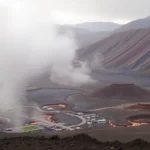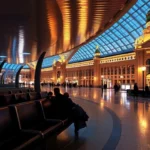Tips for Visiting Salar de Uyuni: Essential Information

Have you ever dreamt of stepping into a breathtaking surreal landscape that feels like another world? The Salar de Uyuni, the largest salt flat on the planet, is a mesmerizing destination that not only offers stunning visuals but also a unique cultural experience. Whether you're planning your first visit or seeking tips to enhance your adventure, this guide will provide you with essential information and insider knowledge about this extraordinary place.
While many know the Salar de Uyuni as "the world's largest salt flat," few truly grasp the depth of experiences it offers. Beyond those iconic photos where it looks like you're balancing on a dinosaur or standing inside a giant Lays potato chip bag, the Salar is a realm of mystical beauty and rich cultural history. It stands as a highlight of Bolivia, drawing travelers from all over the globe, eager to witness its ethereal charm.
Historically, this vast expanse has been exploited for its salt, generating substantial economic benefits for Bolivia, especially due to its lithium reserves, the largest in the world. Understanding this context enriches your experience, making it clear that the Salar de Uyuni is not just a visual spectacle, but a site of significant ecological and economic importance.
- What exactly is the Salar de Uyuni?
- How to reach the Salar de Uyuni
- Types of tours available
- Where to book your tour to the Salar de Uyuni
- Cost of the tour to the Salar de Uyuni
- What to see in the Salar de Uyuni
- What to see in the Eduardo Avaroa Reserve
- How many days are needed to explore the Salar de Uyuni
- Is a one-day tour worth it if time is tight?
- Best time to visit the Salar de Uyuni
- Additional tips for visiting the Salar de Uyuni
What exactly is the Salar de Uyuni?
Spanning over 10,000 square kilometers, the Salar de Uyuni is the largest salt flat in the world, located in the southwest of Bolivia, near the Chilean border and nestled in the altiplano of the Andes. Some areas soar close to 5,000 meters above sea level, making it one of the highest places on Earth.
The most convenient and budget-friendly way to explore the Salar is from the town of Uyuni, which serves as the primary gateway for tourists. While some adventurous souls attempt to navigate the area independently, the best way to truly appreciate the Salar's beauty and surrounding landscapes is by booking a tour with a local agency.
These tours not only cover the Salar itself but also take you to a range of stunning attractions nearby, including bright-colored lagoons and dramatic volcanic landscapes that will make you feel as if you've stepped onto an alien planet.
How to reach the Salar de Uyuni
You can embark on a tour to the Salar from three main locations:
- Uyuni (ending in Uyuni or San Pedro de Atacama, Chile)
- Tupiza
- San Pedro de Atacama (returning to either San Pedro de Atacama or Uyuni)
While it's possible to book a tour from other major cities, like Sucre or La Paz, these typically include bus transport to Uyuni, along with the jeep excursions and accommodations. An example is the overnight bus tour from Sucre, which offers a seamless transition to this magnificent landscape.
For our journey, we took a comfortable overnight bus directly from La Paz with Titicaca Experience for about $15. The bus was modern and cozy, equipped with blankets, and we booked our tickets a few days in advance at the bus terminal. If you're traveling during the colder months, like July, make sure to bring thermal clothing, as temperatures can plummet.
Types of tours available
Tour options vary widely, including private (your group only) or shared tours (up to six people per jeep). Tours may last from one to four days, catering to different preferences and time constraints.
The one-day tour focuses solely on the Salar itself, offering a whirlwind experience, while multi-day tours allow for deeper exploration into other stunning locations, often heading towards the Eduardo Avaroa Reserve. The popular three-day tour is often referred to as "Salar de Uyuni + Colored Lagoons," showcasing a variety of breathtaking landscapes.
For those interested, here are some sample tours:
Although many agencies offer these tours, the routes are generally similar. Differences in pricing often stem from the quality of accommodations, meals, and vehicle conditions.
Where to book your tour to the Salar de Uyuni
Some travelers prefer to book their tours upon arrival in Uyuni, allowing them to negotiate better prices at local agencies or their accommodations. Alternatively, you can reserve in advance with reputable agencies like Civitatis.
We knew we wanted a three-day tour, so we reached out via email to several local companies to compare prices and terms. We ultimately chose Inti Raymi, praised for its fair prices and positive reviews. Although we had initially planned a private tour, we ended up sharing the jeep with three friends from Ecuador and a girl from Germany, which added to the fun!
Cost of the tour to the Salar de Uyuni
The cost of the tours can vary significantly based on two main factors: the duration and whether the tour is private or shared. Seasonal variations, accommodation types, and entry fees also influence pricing.
A three-day shared tour typically ranges from $200 to $250 per person, while a one-day tour costs about $60 to $80 per person. Be cautious of agencies offering prices that seem too good to be true for multi-day tours; often, these deals come with hidden costs.
Here are some common additional expenses you might encounter:
- Entrance to Isla Incahuasi: 30 Bs
- Entry to the Eduardo Avaroa Reserve: 150 Bs
- Polques Hot Springs: 7 Bs
- Bathroom fees: 2-5 Bs
Always carry enough local currency (Bolivian bolivianos) for these small payments, as many places do not accept dollars.
What to see in the Salar de Uyuni
This post recounts our detailed experience on the three-day tour of the Salar de Uyuni, but here are some highlights from the first day, focused solely on the Salar:
- Train Cemetery
- Salt pools
- Dakar Monument
- Salt Hotel
- Isla Incahuasi
- Sunset over the Salar
What to see in the Eduardo Avaroa Reserve
The second and third days of the tour explore the stunning landscapes of the Eduardo Avaroa Reserve, featuring:
- Stone Tree
- Flamingo Lagoon
- Colorada Lagoon
- Morning Geysers
- Green Lagoon
- Dalí Desert
- Polques Hot Springs
How many days are needed to explore the Salar de Uyuni
We believe that the three-day, two-night tour strikes the right balance between exploration and experience. While the first day is undeniably the highlight, be prepared for long hours in the jeep, which can be tiring, yet the stunning views through the window make it worthwhile.
Is a one-day tour worth it if time is tight?
Absolutely! The first day of the tour covers the Salar de Uyuni, which is the best part of the entire trip. While the complete tour is ideal, if a one-day tour is your only option, don’t hesitate to seize the opportunity!
Best time to visit the Salar de Uyuni
The climate can be categorized into two distinct seasons: the wet season (December to March), characterized by the highest rainfall and milder temperatures, and the dry season (April to November), where rainfall is scarce and temperatures drop significantly, especially at night.
While it’s advisable to avoid the coldest winter months (especially June and July), the Salar can be visited year-round. We traveled in mid-July, experiencing frigid temperatures close to -20°C, but we would do it again in a heartbeat. If you plan to visit during this time, be sure to pack warm clothing!
Keep in mind that during the wetter months, certain areas may become flooded, making some attractions like Isla Incahuasi inaccessible.
Additional tips for visiting the Salar de Uyuni
Even if you have a handle on the essentials for planning your visit to the Salar de Uyuni, these last-minute tips can prove invaluable:
› Wear comfortable clothing; it may seem trivial, but in the age of Instagram, you never know when a photo opportunity may present itself! If you're traveling during winter (June to September), pack warm layers and thermal clothing. We even slept fully dressed with hats during our second night!
› Avoid heading straight to the Salar upon arriving in Bolivia; acclimatization is crucial due to the high altitude.
› Whether you book your tour online or through a local agency, make sure to confirm every detail: itinerary, accommodations, what’s included, whether sleeping bags are provided, and how many people will be sharing the jeep. It’s also helpful to ask if they provide boots for walking in the flooded salt flats.
› A portable charger is a great idea; you’ll want to capture countless photos during the long days in the jeep.
› Don’t forget sunglasses! The sunlight reflecting off the salt can be blinding, and sunblock is a must to protect your skin.
› Lastly, bring toilet paper as you may need it in public restrooms, and pack plenty of water and snacks for the journey. Also, don’t skip the chance to bring a swimsuit and towel for a dip in the hot springs at Polques!
We hope this guide has clarified your doubts about visiting the Salar de Uyuni. If you still have questions or additional recommendations to share, feel free to reach out! For daily updates on our travels through Bolivia, check out our Instagram stories.
| Save on your trip |
| Find cheap flights to Bolivia here |
| Book accommodation at the best prices here |
| Reserve activities in Spanish in Bolivia here |
| Get a 5% discount on your IATI travel insurance here |
| Reserve transfers from the airport here |
| Learn how to withdraw money without fees here |
| Get a 5% discount on your Holafly eSIM here |
| Rent a car with the best deals here |
| The best travel books and guides here |
| All our articles about Bolivia |



Deja una respuesta